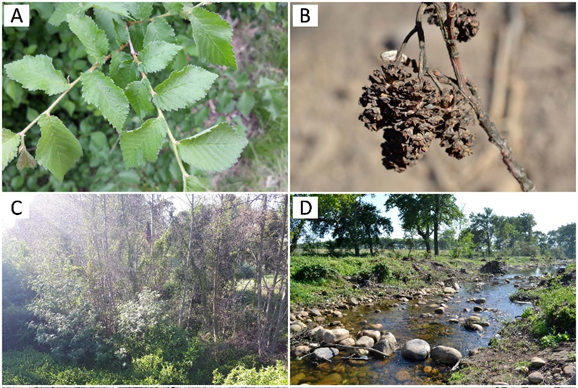A paper published in the journal Fire Ecology has demonstrated that conversion of natural fynbos vegetation to pine plantations, and subsequent invasion of surrounding land by pine trees, increased the severity of large destructive wildfires in the Knysna region in 2017.
The 2017 Knysna fires burnt 15000 ha over four days in the southern Cape, claiming the lives of seven people and destroying more than 5000 ha of commercial pine plantations and over 800 buildings.
A team of researchers from Nelson Mandela University, South African National Parks, the CSIR, and the C·I·B used remote sensing to show that fire severity was significantly higher in plantations of invasive alien trees, and in fynbos invaded by alien trees, than in uninvaded fynbos. The severity of the fire was also exacerbated by a prolonged drought and extremely dangerous weather conditions.
Invasion of fynbos by alien pines can substantially increase the mass of combustible plant material, thus increasing the amount of fuel available to burn, and making fires more intense and more difficult to control. While this is understood in broad terms, there are almost no studies that have clearly documented the phenomenon. These increases in vegetation fuel loads have been accompanied by development in rural areas, and an increase in the interface between housing developments and vegetation, increasing the risks that people face from wildfires. The accepted response to this is to reduce risk by constantly clearing flammable vegetation around houses that are at risk.
“As the climate of the southern Cape becomes more hot and dry, and as the extent of invasions increases, we can expect events of this nature to become more frequent” says Prof. Brian van Wilgen, a co-author of the paper. He adds that “Events like the 2017 Knysna fires are infrequent, and people can quickly lose interest in implementing fire-wise practices, and become increasingly willing to place developments in high-risk areas in the long inter-fire periods. Our study underscores the need to implement effective programs to control the spread of invasive alien plants, and to re-examine the economic and ecological sustainability of commercial planting of invasive alien trees in fire-prone areas”
For more information, contact Brian van Wilgen at bvanwilgen@sun.ac.za
Read the paper in Fire Ecology
Kraaij, T., Baard, J.A., Arndt, J., Vhengani, L. and Van Wilgen, B.W. 2018. An assessment of climate, weather, and fuel factors influencing a large, destructive wildfire in the Knysna region, South Africa. Fire Ecology 14:4 (https://doi.org/10.1186/s42408-018-0001-0)
Media links:




